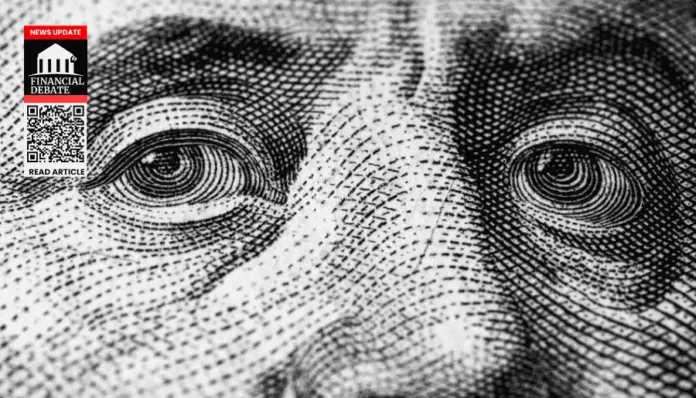Americans Shift to Higher-Yield Savings: A New Cash Strategy
- U.S. households are moving cash from traditional checking and savings into higher-yield accounts like money markets, brokerages, and CDs.
- This shift helps explain why consumer spending remains strong despite lower bank account balances.
- The trend spans all income levels but may be temporary—future continuation is uncertain.
Many Americans are rethinking how they hold their money. Rather than keeping large sums in low-interest checking or savings accounts, people are now placing cash in higher-yield vehicles. These include brokerage accounts, money market funds, and certificates of deposit. That change is helping to support consumer spending, even when standard bank balances seem low.
JPMorgan Chase Study: Cash Reserve Increase Disguised
A recent analysis by the JPMorgan Chase Institute looked at financial habits of 4.7 million U.S. households. The goal was to see where actual cash holdings are growing. When we count money in brokerage accounts, money market funds, and CDs, total reserves have risen steadily since mid-2024. As a result, overall cash holdings are near historical average growth levels—despite stagnation in checking and savings accounts.
Chris Wheat, president of JPMorgan Chase Institute, explains that measured only by traditional bank accounts, cash balances seem flat. But adding newer cash instruments paints a different picture. This helps unravel how consumers keep spending readily, even though data from traditional accounts suggests otherwise.
Understanding the Puzzle of Strong Spending
The strong pace of consumer spending is puzzling given the low growth in checking and savings balances. Wheat notes that people’s overall cash resources are rising once higher-yield options are included. That extra liquidity is what enables households across income brackets to spend confidently. It’s not that they have more money overall—it’s how they store and use it.
Higher Interest Rates Drive the Shift
One main reason for this shift is the higher interest rate environment. With better yields available on non-traditional cash accounts, many Americans are opting for short-term parking spots that earn more interest. They aren’t necessarily investing for the long term—they’re using these vehicles to earn more while keeping funds liquid.
Wheat compares this shift to a form of “active cash management,” where households consciously move money to places with higher returns. It’s not investing in stocks or bonds long term. Instead, it’s strategically placing idle funds where they earn meaningful interest.
All Income Levels Participate
Contrary to expectations, this phenomenon isn’t limited to wealthy households. Lower-income families are also moving money. According to JPMorgan’s data:
- Households earning under $35,000 per year saw total cash balances rise by 5–6%.
- The lowest-income quartile still holds around $1,000 in traditional accounts.
- The highest-income quartile has over $8,000 in checking and savings.
This broad participation shows that cash strategy is becoming more widespread, not just a practice among the affluent.
A Snapshot of Household Cash Behavior
Here’s what the data reveals:
- Traditional bank balances remain stagnant – People still hold money in checking and saving accounts, but these haven’t grown much in 2025, factoring in inflation.
- Expanded reserves grow steadily – When cash held in higher-yield options is included, overall reserves have climbed since mid-2024.
- Spending stays resilient – People continue to make everyday purchases, holidays, and other commitments. That’s likely because they’re drawing on these consolidated reserves.
- Participation is universal – Low- and high-income households alike are exploring better cash-holding approaches.
Implications for the Economy
This cash reshuffling has meaningful economic consequences:
- Support for spending: Rising reserves, even in non-traditional accounts, help consumers maintain consumption levels—boosting businesses.
- Pressure on traditional banks: As deposits shrink or stagnate, banks may feel compelled to offer better interest rates or creative savings products.
- Market shifts: Money market funds and CDs could see continued inflow as cash-holders chase better returns.
These changes suggest a more fluid system where cash moves quickly to where it can earn more, rather than staying locked in traditional deposits.
Uncertainty: Will the Trend Last?
Despite the strong patterns, JPMorgan Chase Institute warns the shift might not persist indefinitely. The institute says more data is needed to confirm whether this strategy holds as interest rates evolve or economic conditions change.
Several questions loom:
- If interest rates drop, will households move money back into checking/savings?
- Or will this spark a more permanent behavior shift toward actively managed cash?
- What happens during economic stress—do people retreat to traditional banking?
Monitoring future behaviors will help reveal whether this trend becomes a lasting fixture.
What This Means for American Households
American consumers are becoming savvy about where and how they hold their cash. Here’s what households should consider:
- Evaluate account returns: Compare yields on checking/savings, money market funds, and CDs. Use online tools or speak with financial advisors.
- Consider liquidity: Think about when you’ll need access to money. CDs may offer higher returns but might have withdrawal restrictions.
- Diversify cash holdings: Just like you diversify investments, spread cash across accounts to balance yield and accessibility.
- Monitor rate changes: Stay alert to interest rate shifts by the Federal Reserve. That may affect where money earns most.
This new era of active cash management marks a more savvy, informed consumer base.
Conclusion
Americans are clearly reworking their cash strategy. Traditional checking and savings accounts show little growth. But once deposits in investment accounts, CDs, and money markets are included, total reserves are on the rise. This rebound supports consumer spending, offering insight into why people continue spending despite stagnating bank deposits.
With participation across income levels, this trend reflects a shift toward financial sophistication. People are seeking better returns in a high-rate environment while keeping funds accessible. Though its future remains uncertain, this behavior hints at a smarter, more strategic approach to household cash in the digital age.
